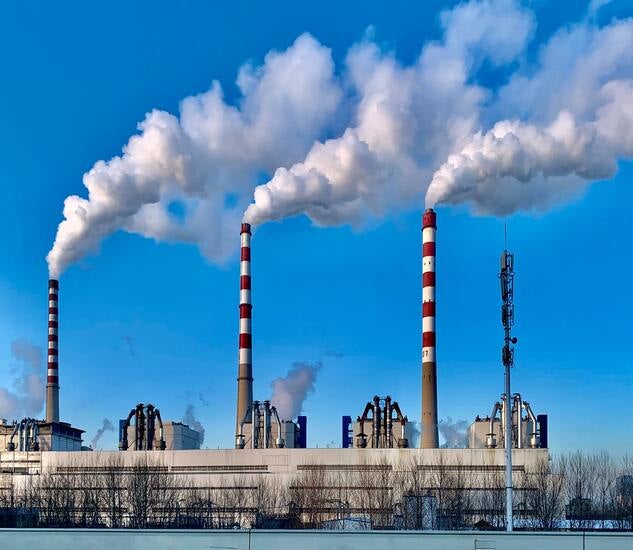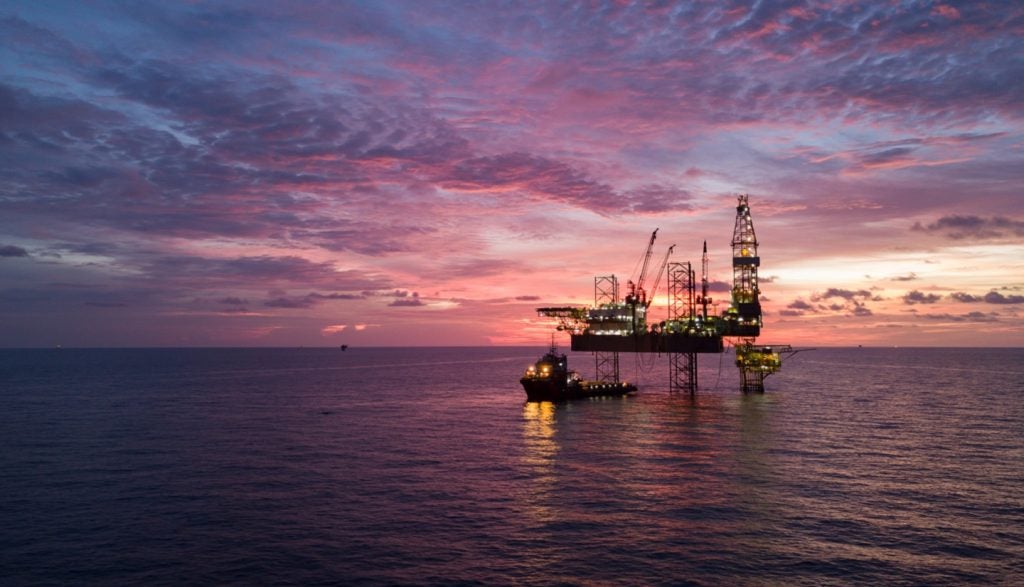
In Paris, 2015, world leaders confronted the inconvenient truth of a polluted world, and the need to end pollution by 2050. In the six years since, governments and companies have dodged, erred, and under-performed in the need to reach net-zero emissions.
The inevitability of decarbonisation has only just started to sink in with many oil companies. Meanwhile, the facts of climate change glare ever more viciously at those who still do not understand.
The net-zero destination brings with it another reality for oil and gas: if your product only exists to pollute, net zero will involve massive amounts of carbon offsetting, radical redesigns of your product, or massive changes to your business. Many have started using all three of these tactics to decrease their carbon footprint, and move away from being “an oil company” toward something far more complex.
First, let oil disappoint you
Oil country is the land of the capitalist. The stereotypes of ruthless oil barons flow from a well of manic competition that formed the first supergiant businesses. The best capitalists must always chase the money. When oil was power, the wells flowed with black gold.
Now, power has changed. Big tech companies have accrued more power than oil companies ever had, and renewables generate power more cheaply than any alternative. As a result, the basic rule for anyone getting out of oil stands clear: you must demonstrate to your capitalists that the well has run dry.
How well do you really know your competitors?
Access the most comprehensive Company Profiles on the market, powered by GlobalData. Save hours of research. Gain competitive edge.

Thank you!
Your download email will arrive shortly
Not ready to buy yet? Download a free sample
We are confident about the unique quality of our Company Profiles. However, we want you to make the most beneficial decision for your business, so we offer a free sample that you can download by submitting the below form
By GlobalDataThe companies that have already diversified, expanded, or bought their way out of oil did so because oil did not pay. Investors, shareholders, and board members got behind renewables because they presented a better business prospect.
Increasingly, scientific papers, think-tank articles, and agency reports work to demonstrate the flaws of careless oil and gas extraction. This happens because, unless executives and investors can see drawbacks to their business plan, they will have no desire to change it.
Unless the writing is on the wall for oil, executives and investors will have no reason to move away from a reliable income stream. Otherwise, sticking with oil just makes good business sense.
1. Organic growth from oily roots
The most notable success case of an ex-oil company comes from Danish company Ørsted. Previously known as DONG Energy, the company formed in a merger in 2006. DONG Energy operated several coal-fired power plants, and later oil and gas assets in the North Sea.
Three years later, in response to climate change, the company decided to radically transform its business. Executives decided to change focus, transforming a company that earned 85% of its revenue from fossil fuels to one earning 85% of revenue from renewable energy. However, not all in the company were convinced of the need to change strategy and decarbonise.
In an interview with McKinsey, Ørsted offshore-wind CEO Martin Neubert said: “There was internal pressure to keep DONG Energy the same. It wasn’t unexpected, because we had spent three decades turning the company into a traditional fossil-fuel company. Fossil fuels were our core competence and the focus of our growth strategy. The scepticism was broad and profound.”
In 2012, another three years later, the company had a much larger investment in gas. When gas prices fell, the case for diversifying into renewables became clearer, even if it did not include fully transitioning. Moving into offshore wind, the company rode a wave of investment by the UK that helped it get a strong foothold in the market.
While the wind unit grew, the company still had sizeable investments in oil and gas. In 2015, a $1.4bn asset disposal cost in the North Sea drove the company to make a larger loss than any other in Danish history. This became the last straw for the company’s petrochemicals business, which it swore off the following year.
In 2016, 4% of DONG’s business relied on oil and gas, so divestment seemed within reach. After the final divestment in 2017, the company changed its name to Ørsted to signify the change. Funds from the North Sea asset sale then strengthened the rapidly growing wind unit.
Ørsted went from playing a relatively small part in North Sea oil and gas to becoming one of the world’s largest wind turbine manufacturers. Today, it also plays a smaller role in battery storage, hydrogen innovation, and waste-to-energy incinerators.
Since Ørsted’s transition, the offshore wind industry has rapidly grown, making a similar conversion much more difficult now. However, some companies can skip the slow road altogether.
2. Buy up, sell out
The biggest oil and gas companies do not need to build a new renewable company in order to decarbonise: they can simply buy an existing one.
Increasingly, the big six oil companies make large investments that seem barely related to their core interests. Many of these have allowed the supergiants to explore new markets without fully committing to an overall transition.
The year is 2021, and Shell, BP, and Total have significant investments in offshore wind projects. Often, the giants make these investments alongside companies with more experience with such projects. This allows those with the cash to learn from those with the knowledge.
BP bought an electric vehicle charging network in 2018 and a stake in a solar company in 2017. Total has also bought charging networks, with business in Singapore and London. It has also developed a large utility business, bought a stake in the world’s largest solar manufacturer, and converted refineries to produce biofuels.
While the green credentials of some biofuels remain debatable, they have also proved popular with Chevron in the US. Meanwhile, Shell owns an offshore wind developer and a utility company, and Italian operator Eni has bought into a 1.2GW Spanish renewable portfolio. In turn, Spain’s Repsol bought into US solar company Falck renewables in May. This, along with many of these acquisitions, has taken place since the start of 2020.
In various configurations, these companies have also invested in massive carbon capture schemes, hydrogen innovation, and more besides. There is a sense that at least some of these ventures show companies testing the waters of clean technology before fully committing, but that eventually, someone will commit.
Holding such companies in a diverse portfolio makes good business sense. However, some of these companies have made significant sacrifices in more profitable areas to get a start in new businesses. A recent analysis by Reuters suggests that BP’s renewable businesses lost more than $100m in total over 2018 and 2019. BP expects them to become profitable by 2025. Until then, they rely on the oil trade to prop them up.
Decarbonisation could mean decentralisation in the oil market
While this may not be the capitalist thing to do, this is the new direction for oil. Sooner or later, these are the routes that oil and gas companies will use to become energy companies. Alternatively, these are the paths to long-term survival that continue to go unheeded by most nationally-owned companies and US corporations.
While some companies buy up green business, the opposite can also help with decarbonisation.
Recently, mining giant BHP sold its oil and gas business to Australia’s Woodside. At the same time, the company has sold off its coal mines, giving it a narrower focus on metals extraction. As a result, BHP has massively decarbonised simply by selling the most polluting parts of its business.
This relatively small move in oil and gas production mirrors a much larger change in oil and gas investment. Banks and funds have become more reluctant to invest in petrochemicals, and finding investment has become much more difficult in some areas.
At the same time, those buying polluting assets have chosen to tackle the full force of decarbonising their industry. To survive, these businesses must develop more expertise in doing so, driving specialisation and streamlining across the industry.
3. Go with the flow and move downstream
Naturally, any oil and gas exploration company with cash to invest will want to follow its oil downstream. Organic growth led oil giants to have a role in refining, distribution, service stations, and chemical manufacturing. In turn, these businesses represent less-polluting industries. Now, the era of downstream expansion may become a time of downstream transition.
Austrian oil and gas company OMV has stated its intention to become a chemicals company, following its purchase of larger stakes in Borealis. At the time, CEO Rainer Seele said: “We want to follow through the lifecycle of our products. We will make things to go through the circular economy, and we want to be a player in the recycling industry.”
While this growth is not entirely organic, it represents one of the first oil and gas companies to fully commit to moving downstream. All of the largest oil and gas companies have a hand in the chemicals business, as do many others besides.
Even now, new forms of downstream business emerge. The growing trade in carbon credits has opened up new businesses, such as Shell’s lateral movement into land management and “carbon farming” in Australia.
Alternatively, some of these downstream businesses may remain intact, but made to synergise with new products. Many hydrocarbon companies look flirtingly toward hydrogen because it would fit well with existing distribution chains. Converting goods vehicles to use hydrogen would allow filling station businesses to continue with little change.
On the other hand, the move to electric vehicles would at least mean a redesign of premises, if not a redesign of the idea of filling stations. This has given companies good reason to jump into electric vehicle charging, looking to take control of the new technology before it takes control of them.






